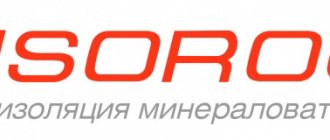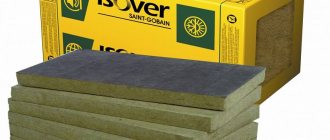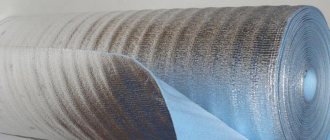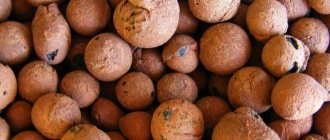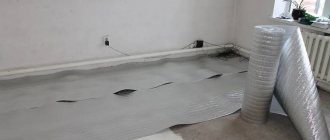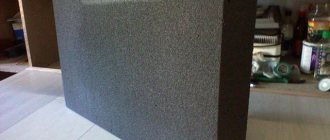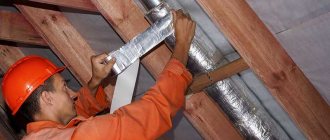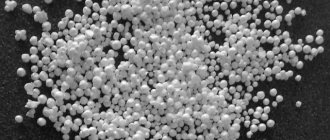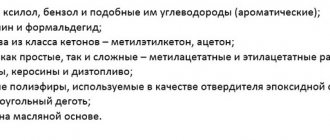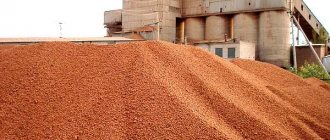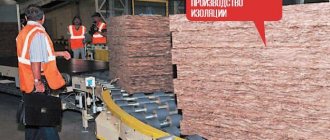In low-rise construction, house designs often do not contain a basement or ground floor. In this case, all floors on the first floor are made directly on the ground or at a short distance from it. Regardless of the type of future floor, be it a concrete screed or a wooden structure, additional thermal insulation is required to maintain a comfortable microclimate in the house and reduce heating costs.
The insulation of the floor on the ground may vary and depends on the type of structure chosen. The layout of such a base may vary depending on the chosen insulation, because different materials suggest different ways of using them.
Conceptual diagrams of insulation
There are several basic approaches to creating a heated floor directly on the ground. Their main difference is the choice of the base base, that is, the presence or absence of a concrete screed. When working with a wooden floor, laying a layer of concrete is not necessary, so the thermal insulation design is slightly different.
Layer-by-layer structure of the floor with concrete screed
When pouring a concrete base, the structure of the insulated floor will be the most complex. The base layers in this design include:
- base in the form of compacted soil;
- a compacted layer of sand of at least 10 cm;
- filling of gravel or crushed stone 8 - 10 cm thick;
- a 5 cm rough screed made of lean concrete (can be made without reinforcement);
- waterproofing film or mastic coating;
- insulation layer of at least 5 - 7 cm;
- additional waterproofing;
- finishing screed with reinforcement at least 8 - 10 cm thick.
Sand on the ground serves as a buffer that retains groundwater. Crushed stone or gravel completely eliminates the rise of water due to large voids, and thereby protects the rough screed from washing out.
The usual filler in this layer can be replaced with expanded clay, then the insulation efficiency will increase several times. But expanded clay is capable of retaining up to 25 - 35% moisture, so additional waterproofing is laid between it and the sand.
When installing a concrete screed as the base of the floor, rigid options for thermal insulation materials are most often chosen, because such insulation is capable of withstanding the load of a heavy concrete layer.
The principle of constructing a wooden floor
When choosing wood as the main material for flooring in a house, the insulation scheme changes significantly. The entire structure does not actually touch the ground and is located at the height of the foundation. The load-bearing elements of such a floor are wooden logs, which are laid directly on the concrete base strip.
Special ventilation holes must be made in the foundation to ensure complete ventilation of the space under the floor. But for greater heat retention, the soil should not be ignored.
Despite the absence of direct contact between the floor and the ground, when the latter freezes, a significant part of the heat from the room will go into the underground. To prevent this effect, the following insulation scheme is used:
- the soil along the entire perimeter of the first floor is compacted;
- a layer of sand of 7–10 cm is laid and compacted;
- the entire space under the floor is covered with roll or film waterproofing;
- a layer of 15–20 cm is made of expanded clay, perlite or other porous aggregate;
- wooden floors are made with mandatory insulation of at least 100 mm.
Such a layout of the floor and the space between it and the ground helps to significantly reduce heat loss and protect the outer part of the foundation from complete freezing in winter.
For floor
During any construction, the closest attention is paid to thermal insulation.
Floor insulation has not been left without attention. Bulk insulation materials are best suited for this. The most common among them are:
- expanded clay;
- perlite;
- vermiculite
Expanded clay in floor insulation is the most widespread insulating material. Low price, mass production and high thermal insulation properties played an important role in this. And, although it is made from clay, the resulting product is quite light. Weight of 1 m³ is on average 350 kg.
It is appropriate to mention that expanded clay is the most environmentally friendly material. It is not susceptible to moisture and at the same time frost-resistant. Sold in bags or in bulk. Expanded clay can be used as an independent insulation material or in combination with concrete. Expanded clay concrete not only retains heat, but in addition is a very durable substrate, foundation.
The next representative of bulk insulation will be perlite. Its origin is volcanic rocks.
A distinctive feature, unique to it, is a high percentage of moisture absorption. Research has shown that it is capable of absorbing four times its own weight in moisture. It is because of this that it is recommended for insulating rooms with high humidity.
Environmentally friendly natural material that does not enter into any chemical reactions. Has high fire resistance.
You can learn about other fire-resistant thermal insulation from this material:
Withstands temperatures up to 900ᵒ C. Having a porosity of up to 40%, it is an excellent insulation material. For insulation it is used in the form of perlite sand. You can buy it in the same way as expanded clay, in bags or in bulk.
Vermiculite is also an excellent natural insulation material.
It is distinguished by its hardness. Along with high fire resistance (up to 1200ᵒ C), it has an impressive moisture absorption coefficient of more than 530%. It has amazing thermal insulation properties.
With a layer thickness of only 5 cm, heat loss is reduced by 75%. It is an environmentally friendly material. Has high chemical and biological resistance. Prevents the appearance of mold and mildew. Having a low volumetric weight, it does not create a load on the foundation. It is sold like all bulk insulation materials - in bags and in bulk.
For floor insulation, not only bulk insulation materials are used. Polystyrene foam, mineral wool, liquid insulation, cork and a number of others are also often used. Each of them has both positive and negative sides. Some are very good, but expensive. For example, cork insulation. Others, like polystyrene foam, are not fire resistant.
Good floor insulation is obtained from ordinary sawdust, but it requires special antiseptic treatment . In addition, it shrinks very quickly and cakes. Bulk insulation materials have the most optimal parameters for floor insulation.
Options for thermal insulation materials
Depending on the chosen design, the requirements for insulation also change. So, when installing a concrete floor, you cannot use semi-rigid materials, because their strength is not enough to withstand the load of the finishing screed. At the same time, mineral and stone wools are perfect for wooden floors, because in this design they are not subject to any mechanical stress.
Expanded polystyrene
The best option for floor insulation is extruded polystyrene foam. Its main difference from classic foam plastic and other materials is its high compressive strength, as well as low thermal conductivity at the level of 0.036 W/mK. To ensure protection of the room, a layer of 50 mm is often sufficient.
Foamed polystyrene foam or polystyrene foam is also quite capable of protecting the floor from heat loss. It has lower strength, so its effectiveness decreases slightly as the thickness of the screed increases to 15 cm. The optimal layer of this insulation is 100 mm.
Both options are attached to special construction adhesive or using polymer disc dowels.
Polyurethane foam
This type of insulation has a unique structure. A huge number of micropores have a closed structure, which makes the material completely impenetrable. To protect a concrete floor, you must choose the toughest polyurethane foam options.
The thermal conductivity of the material is similar to extruded polystyrene foam, so a layer of 50 mm is sufficient for effective protection. It is best to apply a layer of thermal insulation using the spraying method. This method will significantly reduce the time required to complete the work and ensure that the fabric is constructed without joints or cold bridges.
Mineral and stone wools
Such materials are considered the most affordable. But their use is only possible when installing a wooden floor. Even rigid slabs do not have sufficient strength to withstand the load of a concrete screed.
When insulating a wooden structure, the layer of material must be at least 100 mm. It is considered optimal for effective protection to create a thermal insulation layer of 200 mm. The slabs or rolls are laid out on the subfloor between the joists.
It must be remembered that mineral wool needs good waterproofing from the subfloor and vapor barrier to protect against internal moisture in the room.
Expanded clay and foam glass
Excellent options for rigid insulation are mineral-based artificial materials. Expanded clay is a product of clay expansion, and foam glass has a silicate base.
Sand as insulation
Types and form of release
There are four main types of perlite for thermal insulation. The material differs in the shape of the inlet and the method of implementation. Each type of insulation has its own advantages and technical characteristics.
Backfill insulation
The material is perlite sand, which is used to fill voids between the wall and the finish or interlayers in brickwork. Such insulation allows you to completely fill all the cracks and gaps, providing reliable thermal insulation.
Perlite sand is often used to level floors. It is quite lightweight and does not add additional overload to the structures at all. Therefore, it can be used for all buildings. Insulation with fine-grained bulk perlite can reduce the level of heat loss by more than 40 percent.
Plates
Perlite thermal insulation material in the form of slabs is one of the most necessary construction products. This type of insulation is convenient for the construction of various large structures.
To give the material the desired properties in the manufacture of slabs, various types of binders are used - cement, clay, liquid glass, lime, bitumen or polymers. Formed perlite is mainly used for internal insulation. This is justified by the highest hygroscopicity of the material. For external insulation, reliable waterproofing is required.
Perlite slabs
Perlite concrete slabs are especially popular. In addition to expanded perlite, their composition includes sand, water and Portland cement. The strength of the material depends on the ratio of the components. Ready-made perlite concrete blocks differ in their huge size and low weight. One product can replace three bricks. The introduction of such material makes it possible to ensure not only the strength of the structure, but also to reduce thermal losses.
Roofing models
Bitumen-perlite is widely used for insulation and waterproofing of roofs. This roofing material allows you to create a reliable and fairly strong protective coating. Its thermal conductivity is only 0.067 Watt/m°C.
Bitumen perlite has the highest technical characteristics. Due to its flexibility, the material can be easily applied in layers to any roof structure. Perlite insulation based on bitumen is a non-flammable and safe to use thermal insulation product with the highest wear resistance.
Dry materials
Perlite is widely used in dry mixtures. It is added to improve the properties of gypsum, lime or cement compositions. This material is widely used in the preparation of grout for joints, putty and adhesive solutions. Quite often, dry self-leveling perlite mixtures are used when arranging floors.
Perlite plaster is in particular demand. Its technical properties are far superior to conventional surface finishing compounds. Regardless of the degree of grain, perlite plaster is lightweight, which is especially appreciated when arranging facades.
The material is fire-resistant, does not rot and can withstand the lowest air temperatures. Perlite plaster has superior adhesion and is suitable for all types of surfaces. With the help of such finishing, you can make good-quality sound insulation and forever retain heat inside the room.
Perlite insulation technology
You can provide good thermal insulation using perlite without the help of others. The development of insulation with such bulk material is quite simple.
Wall insulation
Perlite is backfilled for brick and block structures. Preparation for insulation is carried out at the stage of wall construction.
The process of filling the thermal insulation material occurs as follows:
- all gaps and holes through which perlite sand can spill out are sealed;
- the material is poured into the space between the wall masonry in parts;
- The insulation is lightly compacted by tapping.
Insulation of walls with perlite
Bulk material can also be used for backfilling between masonry and interior decoration. For this method of insulation, only dry perlite is suitable.
Floor insulation
For thermal insulation of floors with a monolithic hard coating, perlite sand with a grain size of no more than 6 millimeters is used. The process of laying the material is quite simple:
- pour perlite sand from bags onto the base of the floor;
- with the help of special slats, the bulk material is moderately distributed over the surface;
- all pipelines are immersed in a moderately laid composition;
- The floor surface is covered with slabs.
To insulate floors covered with wood, compaction of the material is not required. Perlite sand is simply poured into the gaps between the wood elements of the floor base. Thermal insulation is reinforced with fiberboard or fiberglass. From time to time, cement is used for these purposes. The entire insulated surface is sprinkled with dry substance, and water is sprayed on top.
Perlite is a modern thermal insulation material with unique qualities. With its help, you can provide good sound insulation and firmly insulate the structure of the house.
Perlite - what is it and what are its characteristics. Perlite (a word taken from the French language) is a rock of volcanic origin. When magma reaches the surface due to its rapid cooling, volcanic glass (obsidian) appears, and as a result of groundwater passing through it, perlite (obsidian hydroxide) emerges.
This natural material is divided into two groups: perlite, which contains up to 1% water, and obsidian hydroxide, in which the amount of water can reach up to 4÷6%. In addition to water, perlite contains oxides of aluminum, potassium, sodium, iron, calcium; silicon dioxide and other chemical elements. Volcanic perlite is a porous material that can be black, greenish, red-brown, brown or snow-white in color. According to their texture, perlite rocks are divided into: thick, banded, pumice-like and brecciated. If obsidian is included in the composition of perlite, then it is called obsidian; if feldspar, then spherulitic; and if the material is homogeneous in composition, then it is called resin stone.
We study all known varieties
There are only 4 forms of release of this heat insulator: backfill (it is also called sand), slabs (outwardly similar to extruded polystyrene), roofing models and dry repair mixtures. These varieties have certain characteristics that you need to know.
Backfill insulation
The first form factor of Perlite sand to appear is a loose heat insulator
. The main task of this material during the construction of houses is to soften the structure (it is lighter than an ordinary cement-sand mixture) and increase its insulating properties. In most cases, such a layer is used for backfilling floors and interfloor layers. It is also often used to fill empty spaces in wall masonry. Less commonly, it is used in combination (or instead) with warm plaster.
The most functional and multifunctional form is slabs
According to official statistics, about 60% of all perlite sand produced on earth is used to create insulation boards. They are obtained as a result of hydraulic pressing, as a result of which they are quite comfortable to use. The binder varies depending on the individual type (bitumen, lime, polymer compounds, cement, liquid glass, etc.).
This category of materials has extremely high hygroscopicity. Due to this, it is mostly used for interior decoration. Still, when laying an additional waterproof layer, it can also be used for finishing on the outside. However, this is not particularly justified from an economic point of view.
Roofing models
From the name, it is clear that such analogues are used mainly for roofing. For this problem we use bitumen-perlite, to put it differently. A material of this kind provides an excellent opportunity to create a layer of insulation of various shapes, so it is sometimes used for buildings of a unique design.
Main! There is no need to heat it before applying this coating!
The average thermal conductivity standard for this variety is 0.067 W (m*C), which is considered the most impeccable result. This indicator makes it possible to use this coverage even in the north. Also…
0 0 vote
Article rating
Work order
In fact, all work can be divided into three blocks:
- preparation of the base;
- thermal insulation device;
- laying the finishing layer of the floor.
Preparatory work
When working with soil, it is necessary to remove any vegetation from its surface. Grass roots attract and hold moisture, creating the perfect environment for mold to grow and deteriorate concrete or wood structures. In addition, the soil layer must be compacted as much as possible.
Next, filling is done with sand and coarse aggregate. If the groundwater level is high, it is better to increase the thickness of the sand cushion to 15–20 cm. Such a buffer will help retain excess moisture. When constructing a rough screed, reinforcement is not necessary. This layer serves as the basis for the insulation and does not act as a supporting structure.
Laying thermal insulation and finishing layer
Waterproofing is most easily accomplished using roll or film materials. In any case, the individual sheets are laid with an overlap of 10–15 cm. To fix materials with a bitumen layer, simply heat them. Other types of waterproofing are glued with special water-repellent tape.
It is also better to separate the insulation layer after installation and the finishing screed with waterproofing to prevent cement laitance from entering the body of the thermal insulation.
The final screed is made with reinforcement and made of concrete with a class of at least B15. This material has a denser structure, so it better prevents heat from escaping.
Insulation of the floor when located on the ground can significantly reduce heat loss from the interior, which significantly reduces the cost of heating the entire house.
One of the most important aspects of repair and construction is the arrangement of floors. In a private home, this problem is more acute. Quite often they design a heated floor on the ground - a sought-after, popular solution to the problem. After all, it stores heat well, creates comfort, and sometimes replaces heating. To install such a coating, the conditions of SNiP and installation rules must be strictly followed, which is associated with soil shrinkage.
Laying the “warm floor” system
Warm floor on the ground - what is it?
A warm floor is like a multi-layer cake, which necessarily contains thermal insulation. The construction of a floor on the ground is done in two stages: a rough screed is poured into the lower layers, and after it has matured, the remaining layers are laid.
The point is the soil - it has the ability to sag. Even when it is compacted and compacted, after laying the “pie” of the heated floor, movements still occur, and rupture of the floor elements may occur. Therefore, first, according to the rules, they make a rough screed, then lay the heated floor.
Layout of a heated floor on sand
Sometimes a heated structure is made without the first screed - the heated floor is laid on sand. This can be done if you install two reinforcing frames: one under the heat insulator, the other in the screed - you need to carefully compact the layers of sand, gravel, and soil.
The installation of a heated floor in a building depends on the soil parameters, which must meet the standards. Groundwater should be no more than 600 cm from the soil layer. It is required that the soil has low levels of looseness and airiness. Construction is prohibited on chernozem soils and sandstones.
It is important to take into account the load that acts on the base. Floor installation provides the following:
- Thermal insulation.
- Protection from groundwater flooding.
- Elimination of external sounds.
- Protection against water vapor entering the floor.
- Prevent cracking.
- Providing comfort to residents.
Composition of the floor system cake
For rooms, premises with an area of 20 sq.m. m use electric, water method of floor heating. For small rooms (bathrooms) electric heating is more suitable.
Attention! When arranging and choosing the type of heated floor, you should remember that water heating requires a boiler, a collector and much more. To connect a heated floor system to a central heating system, special permits are required, since installation in an existing system may lead to its incorrect operation.
According to the design, a heated floor on the ground consists of several layers, the installation of each is carried out in stages. Despite several methods of laying the structure, there are general rules that are followed in any case:
- Before laying the first layer of the pie, it is necessary to prepare the soil: clear it of debris, various objects, grass, and level the surface.
- Well-compacted sand - 15 cm. A vibrating plate is used to compact the soil. The sand is compacted using the wet method.
- A layer of crushed stone (gravel) of 8–15 cm. It does not allow groundwater to rise. Metal mesh that strengthens the screed. Rough concrete screed – 150 mm – with compensation distance between zones. In the gaps there is a damper tape.
- A waterproofing layer to prevent concrete from absorbing moisture. It is made from film, membrane. The material is overlapped and secured with tape. Bitumen-rubber mastic is also suitable.
- Insulation layer. For this purpose, foamed polystyrene foam and foil polystyrene are used. For high loads, plates are used. The thickness depends on the climate conditions in the region.
- Waterproofing from film or roofing felt is carried out in 1-2 layers.
- Installation of floor pipes, finishing screed with a total thickness of 10 cm with mandatory reinforcement. A water circuit is attached to the mesh.
- Decorative floor covering.
The entire process of arranging the layers of the pie using technology can take up to 1.5 months.
Advantages and disadvantages of heated floors
The floor heating system has its advantages:
- Reliably protects from the cold. After all, the soil under the floor has a positive temperature.
- Choose any insulation.
- Film and roofing felt are suitable for waterproofing.
- The floor is finished with any coating.
- During construction, the entire load is directed to the ground, so no calculations are required. If the load is increased, the thickness of the pie increases.
- Changes can be made to the design, for example, making the insulation thicker.
- Warm floors are used as primary and additional heating. Such floors warm up quickly, distribute the temperature evenly, which eliminates the occurrence of drafts.
- The floors have good sound insulation.
- Protects against the formation of mold, fungi, and other microorganisms.
Installation of a floor heating system during the construction of a house
Despite the large number of advantages, negative aspects should also be noted. Such a floor reduces the height of the room; if the system breaks down, repairs will be expensive and difficult; the location of groundwater must be taken into account; the process of arranging the system on the ground takes a long time (it is advisable to carry out installation during the construction of a house).
Recommendations for installing a heated floor system
- You can install a heated floor on the ground in a private house yourself, having studied all the technology of the processes. First, determine to what level the soil should be removed.
Attention! The soil must be removed - it will decompose and “smell” if it is not removed. Moreover, the top layer is very loose and will settle.
- Regardless of whether the subfloor will be laid, the soil is removed. The lower layers are dense, since there are no microorganisms there, and experience greater stress.
- The thickness of the heated floor can be 20 cm or more. Therefore, markings begin from the zero level, i.e. where the finished floor is. They make a mark and calculate how far to go down. It is advisable to note the thickness of each layer.
- The dense layer of soil should be carefully leveled, compacted, and its evenness checked using a level. After all, this is the basis of the following materials. After careful compaction, the sand is also leveled. A layer of expanded clay and crushed stone is compacted to a monolithic state.
- The first screed is made in two ways: crushed stone with sand is poured with liquid cement-sand mortar, and a screed up to 150 mm thick is poured. To reinforce the screed, reinforcing mesh or metal wire is used. The floor is reliable and can withstand heavy loads.
- The joints of polystyrene foam boards are taped with tape to prevent the solution from leaking.
Thermal insulation for underfloor heating is the key point
- Plates are used above 35 kg/cu.m. meter. For cold regions, its thickness can be more than 10 centimeters. When the thickness of the thermal insulation layer is large, then two layers are made. Moreover, the joints of the 1st layer are covered with slabs of the 2nd layer.
Options for installing a heated floor pie
Laying is carried out in several ways - the choice depends on the location of groundwater, the type of heating system, loads, and other factors.
The floor pie has a main layer - a concrete subfloor (it is considered the main one). There is an option when the concrete layer is replaced with a sand cushion 150 mm thick. All work and the sequence of their implementation does not change. However, leveling a sand bed is much more difficult.
Depending on the insulation
The version of the pie varies depending on the insulation chosen. For example, when choosing expanded polystyrene, installation is carried out as follows:
- The crushed stone layer is 300 mm.
- Concrete screed – 150 mm.
- Waterproofing.
- Polyurethane foam.
- Finish screed with steel mesh reinforcement.
When using mineral wool slabs, which are considered durable and resistant to deformation, they are laid in two layers. To reduce moisture absorption, the slabs are treated with a water-repellent solution.
With a high location of groundwater
When groundwater is close, observing the order of layers is not enough - the water must be drained. If the underfloor heating pie is laid below the ground water level, then drainage must be done.
Therefore, a drainage system is installed at least 30 cm below the required level. River sand and other rocks are used, for example, excavated soil mixed with crushed stone.
Important! Peat soils and black soil cannot be used to construct a drainage system.
The selected material is poured in layers of 100 mm, which are compacted and spilled with water. Three layers are made, geotextiles are laid on the compacted material. It allows water to pass through without mixing with different materials. It has increased strength, is not damaged by insects and animals, and evens out the load.
Waterproofing is carried out with bitumen mastic (other material), thermal insulation along the perimeter of the floor foundation with polystyrene foam slabs. For reliability, a basic screed is made and waterproofing is carried out with membranes. Next, the remaining layers are laid: heat insulation, fasteners, pipes. It is filled with screed and the front covering is laid.
Warm floors in a private home are an excellent option that saves time and reduces costs. Proper arrangement of the heated floor “pie” provides warmth and home comfort for a long time.
Multilayer “pie” of the “warm floor” system on sand:
The presence of high-quality and effective thermal insulation is a guarantee of coziness and comfort of any home.
It is especially important in a wooden country house.
After all, natural wood itself naturally has excellent heat-insulating properties.
However, this is sometimes not enough to ensure maximum comfort.
Therefore, if you want your home to be warm, comfortable and for your roofing materials to last as long as possible, it is necessary to insulate the ceiling before completing the final finishing.
Yes, heat loss in the house occurs both through walls and through openings.
But quite a lot of heat also escapes through the ceiling (about 20%).
After all, warm air rises and if it does not meet an obstacle on its way, it will simply go outside and the air inside the house will have to be heated again.
Therefore, ceiling insulation is carried out at the stage of building a house.
But if it was not done for some reason, then it will have to be arranged now.
Types of non-combustible materials
The use of non-combustible thermal insulation is permitted indoors and outdoors. Today, a large number of insulation materials have been developed that have different production technologies and characteristics.
Liquid
The group of liquid insulation materials includes synthetic-based materials that are applied to the surface to be treated using special sprayers. A complete thermal insulation layer without joints is formed.
Warm paint
Thermal insulating paint is made on the basis of acrylic with the addition of calibrated silicone microspheres. It has the consistency of thick sour cream. It can be applied to any surface: metal, plastic, concrete, brick and so on.
The thickness of one layer is about 1 mm. The service life of such coating is 20 years.
Thermal paint is used for thermal insulation of building facades, interior work, treatment of floors, foundations, roof insulation, and pipeline insulation. It also prevents condensation from forming on surfaces.
Among its advantages, experts highlight:
- ease of application. You can even coat hard-to-reach places with heat paint;
- no need to prepare the surface for insulation;
- high decorativeness of the resulting coating. It is white, but you can add any color to it;
- environmental friendliness;
- excellent adhesive properties.
Among the disadvantages of thermal paint, its high price is noted. To create high-quality thermal insulation, it will need to be applied in 10-12 layers.
Important! Paint consumption is often higher than indicated on the package, so you need to buy it with a reserve.
Among the most famous brands producing thermal paints are: Asstratek, Corundum, Akterm, Tezolat, Alfatek.
The price of 1 square meter of such coverage varies from 800 to 1500 rubles.
Liquid foam
Spray foam is a liquid material based on urea resins. It is applied to the surface with a spray. Hardens in about 20 minutes.
As a result, cellular insulation is formed, which reliably protects the building from exposure to low temperatures. Its maximum service life is 50 years.
This insulation is mainly used for outdoor work. It is applied to the walls and foundation of the building. The finished surface has an unsightly appearance and is susceptible to mechanical damage. Therefore, it is covered with siding or any sheet material. Spray foam can also be used for thermal insulation of roofs and attics.
The advantages of polystyrene foam are:
- ease and high speed of application;
- excellent adhesion to any surfaces;
- resistance to mold;
- good soundproofing qualities.
The disadvantage of spray foam is the unpleasant odor during application. It weathers only after the coating has completely hardened. When processing horizontal walls, it is necessary to take into account the shrinkage of the material by 5-20%.
Foam plastic of the brands Recht, Zigger 65, Point Penoplast, Liquid Penoplast is in demand.
One square meter of such insulation will cost from 1200 to 1500 rubles.
Spray polyurethane foam
Polyurethane foam is a gas-filled polymer. For its manufacture, a mixture of diisocyanate and polyol is used. These two components are connected using a special sprayer. A chemical reaction starts, releasing carbon dioxide.
Its bubbles are enclosed in a polyurethane shell. Thanks to this, high thermal insulation rates are created.
Spray polyurethane foam can be used for interior and exterior applications. It is used as a non-flammable insulation of walls and ceilings, foundations, and roofs.
Among its advantages are:
- long service life, up to 25 years;
- good sound insulation properties;
- easy to apply to surfaces of any configuration;
- protects metal products from corrosion. Due to this, polyurethane foam is used for thermal insulation of pipelines and water tanks;
- the light weight of the finished coating does not create additional load on the structure.
Significant disadvantages of polyurethane foam are its high price and the need for special equipment for application.
It is problematic to do the work yourself, so it is better to turn to professionals. The resulting insulating layer will have to be protected from sunlight and mechanical influences.
The companies Khimprom, Dau-Izolan, Elastokam, and Vladipur specialize in the production of polyurethane foam.
The price for 1 square meter of finished coating varies from 1300 to 2500 rubles, depending on the thickness of the layer.
Minvata
The term mineral wool refers to heat-resistant insulation made from glass, basalt or slag fibers.
It is available in the form of flexible mats. Three main types are popular.
Slag wool
Slag wool is a material obtained from waste from the metallurgical industry. In its production, acidic components are used that are harmful to human health.
Therefore, such insulation is extremely rarely used in residential buildings. It is suitable as a cheap option for insulating a shed or outbuilding.
The advantages of slag wool are:
- high chemical resistance;
- good sound insulation properties;
- durability. Its service life reaches 50 years;
- low price.
This material has many disadvantages: hygroscopicity, poor response to sudden changes in ambient temperature, causticity, inability to use on metal surfaces, and others.
It must be used in conjunction with vapor barrier materials.
The production of slag wool is carried out by the companies Techno Plant, Minvata, Minplit Plant, Rockwool.
The price of such insulation is about 100 rubles per 1 square meter.
Glass wool
Glass wool waste is used to produce glass wool. They are melted and inflated with steam. The result is thin fibers, from which mats are subsequently formed.
This fire-resistant insulation is not afraid of frost, exposure to chemicals, or fungal infections.
Among its other advantages are:
- low price;
- ease of installation;
- elasticity;
- breathability.
A significant disadvantage is the danger when working with such materials. During its installation, particles of glass fibers can enter the human respiratory system. Therefore, installation is carried out in a special protective suit, respirator and gloves.
Glass wool needs to be protected from exposure to ultraviolet radiation, so it is mainly used for interior work.
This fire-resistant insulation is suitable for finishing walls, ceilings, roofs, sewer and water pipes.
Might be interesting
Thermal insulation
How to insulate a roof from the inside and not make mistakes?
Thermal insulation
Roofing and drainage: heating rules
Thermal insulation
Insulated Swedish stove: pros and cons
Thermal insulation
Penoizol: self-production
It can be used for facades, but you will have to lay a protective coating on top: a special film, but with decorative panels mounted on it.
The companies Isover, URSA, Knauf, EcoRoll are recognized as market leaders.
On average, for 1 square meter of such coverage you will have to pay from 150 to 300 rubles.
Basalt wool
Basalt wool is a fire-resistant insulation material made from molten basalt rock. It consists of thin fibers formed into a mat.
This material is more reliable and safe compared to glass wool. It has high thermal insulation properties and is completely safe for humans.
Among its other advantages are:
- long service life up to 50 years;
- excellent sound insulation properties;
- resistance to mold, rodents, insects;
- light weight;
- moisture resistance;
The disadvantage of basalt wool is its high cost. To install it, you will need to build a sheathing.
During work, be sure to protect your eyes with goggles and wear gloves.
More often, basalt wool is used as non-flammable insulation for walls on the outside of a building. It is also used to treat floors, attics, and pipes.
The leaders in the basalt wool market are TechnoNIKOL, Rockwool, Izovol, and Ecover.
A square meter of such coverage will cost 200-350 rubles.
Bulk
Granular materials are called bulk materials. They are poured into a pre-prepared crate. Mixing different fractions of granules allows you to achieve the best result.
Perlite
Perlite is made from a glass-like rock of volcanic origin. When heated, the raw material increases in size and is saturated with air.
Granules are formed, which are used as fill-in heat-resistant insulation. Slabs are also made from perlite. They are easy to install and suitable for various surfaces.
Among the advantages of perlite are:
- light weight;
- environmental friendliness;
- resistance to chemicals, corrosion, fungal infection;
- high sound insulation properties;
- safety for humans.
The main disadvantage of this material is its ability to absorb moisture well. Therefore, it can only be used in conjunction with high-quality non-combustible vapor barrier.
More often, perlite is used to insulate the walls of a building built from brick or blocks.
Perlite is produced by many enterprises: Irkutsk Construction Materials Plant, MTK-Ural, GruppSibHolding, Akvasorb.
Its price is about 1,500 rubles per cubic meter.
Expanded clay
Expanded clay is granules of foamed fusible clay and shale. It is completely natural and therefore safe for humans.
Ideal for the manufacture of non-combustible insulation of external walls of brick or block houses.
Experts note the following advantages of expanded clay:
- affordable price;
- durability;
- resistance to chemicals, mold, corrosion, insects and rodents;
- ease of installation. Expanded clay is poured between the main wall of the building and the brickwork outside;
- light weight;
- resistance to sudden temperature changes.
The disadvantage of expanded clay is its hygroscopicity. Under the influence of mechanical load, the granules crumble, turning into dust. Before starting work, be sure to wear a respirator.
Today the companies Unitech, Chernozemstroy, Atum and others are engaged in the production of expanded clay.
The average price for 1 kg of such material is 15-20 rubles.
Vermiculite
Vermiculite is a mineral that contains magnesium, iron, aluminum and other elements.
Under the influence of high temperature, the granules swell and their size increases by 25 times. The result is a fire-resistant material with excellent thermal insulation properties.
Among its advantages are:
- chemical and biological resistance;
- strength. Vermiculite does not deteriorate during transportation or vibration, and does not turn into dust;
- good sound insulation properties.
Its disadvantage is its relatively high cost.
The price for 1 liter varies from 7 to 15 rubles.
The production is carried out by the following companies: SibEcoVer, TD Vermiculite, Priority and others.
Vermiculite is used in bulk form to fill cavities in insulated structures. It is poured between the main wall of the building and a layer of facing brick. It is also used to insulate roofs and ceilings.
Note! Vermiculite easily absorbs moisture. But it also quickly releases it back into the environment without losing its properties.
Porous
One of the latest developments was the invention of porous non-flammable thermal insulation materials. They consist of 80% voids and only 20% a mixture of natural ingredients.
Foam glass
Foam glass is produced by heating silicate mass. Substances that cause a violent chemical reaction are added to it, resulting in the release of gas.
The result is a lightweight and durable material with a high level of heat resistance.
Foam glass is made in slabs with a thickness of 6 to 12 cm. They can withstand significant mechanical loads and do not shrink during long-term use.
Among other advantages, note:
- versatility. This material is suitable for insulating any surfaces: facades, external and internal walls, roofs, floors;
- service life reaches 100 years;
- excellent sound insulation properties;
- ease of installation. The slabs are cut with a regular hacksaw and fixed with glue or dowels;
- environmental friendliness.
Foam glass does not withstand impact loads well and interferes with proper air exchange. But its main disadvantage was its high cost.
The companies Amaks, Neftezol, Ekopenosteklo, and ICM specialize in production.
The average price for 1 square meter of such coverage will be 1600 - 2000 rubles.
Methods for insulating the ceiling of a wooden house
All methods can be divided into internal and external.
Internal methods are when the insulation is hemmed to the ceiling from inside the house, and external methods are when it is laid or poured onto the ceiling from the outside (from the attic).
Insulation by any external method convenient for you can be done even when people already live in the house.
Carrying out such work does not in any way affect anything that happens inside the house.
But this is not the case when insulating the ceiling of a wooden house.
If the finishing has already been completed, then insulation from the inside is not possible.
It is for this reason that this should be taken care of in advance.
Insulation materials
A fairly large number of materials are used to insulate the ceiling:
- bulk (sawdust, expanded clay, earth, etc.);
- fibrous (all kinds of cotton wool);
- polystyrene foam insulation (extruded polystyrene foam, polystyrene foam).
Bulk insulation materials are naturally used for external insulation of ceilings.
When insulating the interior, either polystyrene foam or mineral wool in the form of slabs are used.
Sawdust
This is the cheapest insulation known for several hundred years.
This method is considered outdated, but sawdust is still used quite often.
This is an environmentally friendly material that is mixed with clay and lime.
And the effect of sawdust is often higher than that of modern synthetic materials.
Expanded clay
The second bulk insulation is expanded clay.
It is obtained by firing foamed clay granules in special drum units.
The thermal conductivity of expanded clay is not the lowest, but it is very easy to use, it is an environmentally friendly material, it does not burn and is quite affordable.
But it is a very good sound insulator!
Expanded clay has high moisture and frost resistance.
It is very important that rodents and insects ignore it.
Extruded polystyrene foam or polystyrene foam
One of the most popular insulation materials.
The material has a cellular structure and consists of oval or round granules filled with gas.
It is very easy to install on the ceiling both outside and inside.
Advantages of bulk insulation
High-quality home insulation is the basis for a comfortable stay. Therefore, it is important to pay enough attention to the material before choosing insulation. Bulk heat insulators have the following positive characteristics:
- minimal heat loss;
- resistance to sudden temperature changes;
- minimum weight;
- environmental friendliness;
- Fire safety;
- long service life;
- ability to retain heat for a long time;
- ease of installation.
To insulate walls with bulk basalt wool or other bulk insulation, no special tool is required. All work can be done by a home craftsman without the help of professionals.
It is important to pay attention to the manufacturer of thermal insulation materials. A popular Russian company supplying quality products is Ecover.
Ceiling insulation technology in a wooden house
The technology for external ceiling insulation is quite simple.
For most insulation materials, the steps are repeated with minor changes.
Add expanded clay and sawdust
Any bulk insulation material is not poured onto the ceiling boards, but on top of the vapor barrier.
The work is performed in the following order:
- We lay a layer of vapor barrier on top of the ceiling boards. Ideally, it should be a reinforced special film that has foil on one side. Place the film with the foil down.
- We pour (carefully!) a layer of expanded clay onto the vapor barrier. The optimal layer thickness is 20-40 mm. Ideally, expanded clay should be used in two fractions: sand and gravel. Then the insulation will be denser and its performance will increase. When pouring insulation, you must try not to break it. You should not add 2 cm of expanded clay to the proposed attic floor.
- Now you need to cover the expanded clay with a moisture-resistant material. Waterproofing is laid with an overlap, and the joints are taped with special adhesive tape.
- If you plan to move people around the attic, then a cement-sand screed is poured over the waterproofing.
- Now the attic floor boards are laid over the beams.
The technology for insulating the ceiling with sawdust is a little more complicated than the technology for insulating with expanded clay.
Because you will have to mix the insulating solution.
You will need:
- dry sawdust (fresh will not work);
- cement or clay;
- water.
The sawdust should be medium in size.
If they are small, a lot of cement will be lost and the mixture will turn out heavy.
And its work will be ineffective.
To prepare the mixture, sawdust is mixed with dry cement and water is gradually added to the solution.
The shavings should be stained with cement, not too wet, but not too dry.
A layer of vapor barrier is laid on the ceiling surface from the attic side, onto which the mixture is evenly spread.
It should be distributed and compacted a little.
In order for the material to work with maximum efficiency, a layer of 20 cm is sufficient.
After the mixture has dried, you can lay the floor of the attic.
Since the process is “wet” and the mixture must dry, insulation with sawdust is carried out in the warm season.
The disadvantages of such insulation include rotting of chips under the influence of moisture.
By the way, insects and mice love these shavings.
Therefore, sawdust is used as insulation less and less.
Laying mineral wool
Insulating the ceiling with mineral wool will cost slightly more than with sawdust or expanded clay.
Because the insulation itself is more expensive.
You will need:
- vapor barrier film;
- polyurethane foam;
- mineral wool;
- tape and stapler;
- cement, sand, boards.
The technology for laying mineral wool is as follows:
- The surface is cleared of debris and a layer of vapor barrier is laid on it. The joints are taped. The edges are secured to the beams using a stapler. The floor beams should also be under the film.
- We lay slabs or strips of mineral wool very tightly between the beams. To increase efficiency, the material can be laid in several layers. The top layer is laid so that the joints of the bottom layer overlap.
- Existing gaps and cracks are filled with foam. Then everything on top is covered with waterproofing. A cement-sand screed can be placed on top of the film or attic floor boards can be laid.
Instead of mineral wool, polystyrene foam or polystyrene foam is often laid.
Additional information about insulating the bathhouse ceiling with sawdust.
How to wash a fabric stretch ceiling? Read about it at the link. You will find out whether suspended ceilings can be washed, what and how to wash them.
Read about the manufacturers of Armstrong ceiling panels here. The technical characteristics of ceiling panels and components are given.
The installation technology is exactly the same.
Sometimes a combination of materials is used to insulate a wooden house.
For example, mineral wool and polystyrene foam.
Variety of insulation fills
Installation and leveling of thermal insulation
The construction market offers a large selection of loose granular heat insulators:
- Expanded clay;
- Granulated polystyrene foam;
- Foam concrete crumbs;
- Ecowool;
- Traditional sawdust and sand;
- Boiler slag;
- Vermiculite.
Let's try to understand the advantages and disadvantages, as well as the main technical characteristics of these materials.
Expanded clay
Expanded clay granules
This bulk heat insulator is lightweight and has a porous structure. Expanded clay is produced by firing light alloy clay. Therefore, it is an absolutely safe and environmentally friendly heat insulator (see also the article Insulating floors with expanded clay - “last century” or modern technologies).
Expanded clay can be produced in three versions:
- Expanded clay sand - has a particle size from 0.14 to 5 millimeters. It is mainly used for filling lightweight concrete and as bulk insulation for floors;
- Expanded expanded clay crushed stone - granules from 5 to 40 millimeters. An excellent option for thermal insulation of foundations and floors of residential buildings;
- Expanded clay gravel – has a rounded granule shape. Since the surface of the granules is melted, the material acquires a porous structure. Due to this property, expanded clay gravel has increased frost resistance and resistance to open fire. The size of the granules ranges from 5 to 40 millimeters.
Dry expanded clay screed on the floor
Advice. Expanded clay gravel is recommended for insulation of attic floors, since the material is light in weight and has low thermal conductivity. Installing an energy-saving layer on the attic floor is easy to do with your own hands.
Marking of the expanded clay fraction indicates the size of the granules:
- Fractions from 5 to 10 millimeters are recommended for thermal insulation of floors and roofs;
- Expanded clay fractions from 10 to 20 millimeters are ideal thermal insulation for baths and saunas. This insulation option is able to maintain a certain temperature and humidity in the room;
- Granules over 20 millimeters are used for thermal insulation of foundations and basements.
Important. When performing insulation with bulk materials, it should be taken into account that such insulation settles over time. Therefore, the installation instructions for granulated expanded clay recommend carefully compacting the insulation layer.
Below is a comparative table of insulation thickness depending on average winter temperatures.
| Material | Density | Minimum thickness (in centimeters) at average winter temperatures, in degrees Celsius | ||
| -20 | -30 | -40 | ||
| Boiler slag | 600-900 | 16 – 18 | 20 – 24 | 26 – 30 |
| Expanded clay of various fractions | 400-600 | 14 – 16 | 18 – 22 | 24 – 28 |
| Mineral wool | 100-250 | 8 – 10 | 12 – 14 | 16 – 18 |
| Granular foam | 20-60 | 3 – 5 | 5 – 8 | 8 – 12 |
Advice. Boiler slag and expanded clay are recommended for wall insulation in regions where winter temperatures do not fall below twenty degrees.
Granulated polystyrene foam
The photo shows polystyrene foam in granules
There is still debate among experts regarding this insulation. On the one hand, it is a lightweight material that is used as backfill for insulating walls and roofs, or is used as an additive to concrete insulating mixtures.
Opponents of this insulation talk about its toxicity and flammability. And it is recommended to use granulated foam glass as an external and internal heat insulator. But this insulation is relatively new and its properties have not yet been sufficiently tested in various operating temperature conditions.
By combining these two opposing opinions, we can come to the conclusion that the golden mean is more reasonable. In addition, the price of granulated polystyrene foam is low. Therefore, it can be used to insulate walls using the well masonry method.
Or add it as additional thermal insulation to concrete mixtures for finishing basements and foundations.
Vermiculite
Laying a layer of vermiculite when insulating the floor
This thermal insulation material is made on the basis of mica and has a layered structure. In the process of producing vermiculite, no chemical additives or impurities are used, so this insulation can be used when insulating loggias, external and internal energy-saving cladding of residential premises.
Backfilling with vermiculite five centimeters thick reduces heat loss by 75 percent, and a layer thickness of 10 centimeters guarantees a reduction in heat loss by 92 percent.
The advantages of this modern insulation include the following characteristics:
- The high porosity of the material ensures the breathability of the insulation, which allows the walls to “breathe” under the finish. This quality of vermiculite provides a comfortable indoor microclimate;
- Vermiculite is environmentally friendly and does not emit toxic substances;
- This is a non-flammable material (flammability group - G1);
- The insulation is resistant to fungi and mold. And also rodents and insects do not spoil this insulation;
Location of insulation layers
- Vermiculite backfill insulation for walls does not require special skills during installation. It is enough to fill in a layer of insulation and seal the insulation. No additional fasteners are required during installation;
- The service life of this insulation is at least fifty years, and the price is quite affordable.
Important. The thermal insulation instructions recommend insulating the walls with a ten-centimeter layer of backfill. And for thermal insulation of attics and roofs and interfloor ceilings, a backfill of five centimeters is sufficient. To protect the insulation from moisture, it is recommended to lay a layer of vapor barrier film.
Wood chips and sand
Thermal insulation of the attic with sawdust
Traditional insulation materials used for energy-efficient finishing of basements and attics. These bulk floor insulation materials have been traditionally used for centuries. But there are many modern, more convenient to install materials that have low thermal conductivity and good water-repellent characteristics.
Cellulose insulation – ecowool
Ecowool - an inexpensive and safe option for thermal insulation
Bulk insulation made from shredded newsprint (81 percent), antiseptics (12 percent) and fire retardants (7 percent). In world construction practice, this composition of insulation has been used for more than eighty years, but it appeared on the construction market of Russia and the CIS about ten years ago.
The insulation contains boric acid as an antiseptic, and borax as a fire retardant. So we can speak with confidence about the environmental safety of the material.
Due to the fact that the fibers of the material fill all the voids in the energy-saving finish, it can be recommended for insulating complex building structures.
We insulate from the inside
The ceiling of a house can be insulated not only from the outside, but also from the inside.
But this is not always possible.
If the ceiling is low, then this is not done, as it will become even lower.
If cosmetic repairs are made, then they also do not insulate the interior.
Otherwise, all cosmetics will simply disappear.
But if a house is being built or renovations have begun, then this is the most optimal time for insulation work.
Insulation from the inside is very convenient to do if the finishing material used is: plasterboard, plastic panels, boards, wooden lining or any other type of ceiling that is mounted on a frame of beams.
The technology for insulating the ceiling from the inside is as follows:
- Before you begin directly installing the insulation, you need to carefully blow out all existing cracks with foam. If the cracks are large, they are first caulked and then blown out.
- A vapor barrier film is attached to the ceiling using a construction stapler. This is necessary so that the ceiling “breathes” and condensation does not accumulate there.
- You can lay the thermal insulation material in the way that is most convenient for you. If you are doing insulation alone, it is better to use a material of a more compact size. If you have helpers, you can also use rolled materials. The main thing is that the material is laid as densely as possible. Then cold air will not pass through the cracks.
- After a layer of thermal insulation material has been laid between the beams, the ceiling covering is installed.
The entire insulation process cannot be called complicated.
The main thing is not to forget the vapor and waterproofing and lay the material so that there are no cracks.
Video about ceiling insulation in a wooden house:
Then the house will be very warm and comfortable.
- Author: Maria Sukhorukikh
Rate this article:
- 5
- 4
- 3
- 2
- 1
(0 votes, average: 0 out of 5)
Share with your friends!
Types of backfill thermal insulation
Hundreds of years ago, during the construction of timber or log houses, the very first backfill insulation
- wood sawdust. Similar to today's analogues, they were quite good in terms of thermal conductivity, but they shrink or lose their properties when wet. Modern materials are more advanced in many respects. The most popular of them are discussed in detail below.
- Expanded clay sand.
Thermal insulator , the basis of which is clay. It is used as an independent insulation for residential or industrial buildings, and in combination with concrete (concrete is made from expanded clay). Today it is obtained by roasting clay shale.
The production technology varies depending on the required size of the final granules.
By studying the labeling of the backfill insulation, you can understand what size granules of the material are and for what areas of the house it is suitable. For example, expanded clay is used as floor insulation or acts as a component of concrete cladding. Granules with a diameter of 5-10 mm are suitable for pitched and flat roofs, floors, and attics; larger than 15 mm - for thermal insulation of a basement or foundation.
Expanded clay sand inevitably shrinks with use, so during initial installation it should be compacted strongly to reduce shrinkage. It is recommended to insulate walls with this material only in regions where the temperature during winter does not drop below -20 degrees.
- Perlite sand.
The heat insulator is made from silicate volcanic rocks using the same technology as expanded clay sand. When heated to 1000-1200 degrees, moisture evaporates from the surface of the stones, leaving air in the middle of them. The result is white or gray granules with a diameter of 1 to 10 mm. The density of perlite sand varies from 75 to 150 kg/m3, and because of its color it is also called “glass heat insulator”.
Very small granules (1-2 mm) form perlite, used in such areas:
- thermal insulation of residential premises;
- production of sound materials;
- production of insulating plaster;
- creation of fire-resistant concrete.
Granules filled with air weigh less than expanded clay sand, making them suitable for wall insulation. Also, the material will resemble mineral wool, since in addition to saving heat, it prevents the penetration of foreign sounds into the room.
- Vermiculite.
Expanded material made from hydrated mica, which is increased in volume by 15-20 times by thermal treatment. It has very high fire-resistant properties, thanks to which it is used when installing chimneys. Great for floors and walls.
A thin layer of vermiculite 5 cm thick will save up to 70% of the heat in the room. This is enough for roof insulation. For walls, floors and foundations, it is recommended to make twice as much material.
The density of vermiculite is less than that of expanded clay sand or perlite sand - the largest volumetric mass is 100 kg/m3. This fill-in heat insulator in bags of a specific volume, and is used in almost every room of the house.
The advantages of vermiculite include:
- low thermal conductivity (0.04-0.06), comparable to foamed polymer and min. cotton wool;
- lack of tolerance for the occurrence of empty spaces and seams;
- high melting point (1400 degrees);
- absence of toxic materials;
- biological stability (prevents mold, mildew, is not interesting for rodents);
- good sound insulation;
- the lightness of the material allows it to be used in houses made of sip panels, on load-bearing systems or foundations;
- ease of thermal protection work and time saving.
- Cellulose wool.
A relatively new material that appeared on the market only 10 years ago. It is made from recycled paper, fire retardants (substances that interfere with tanning), and antiseptics. Harmless to humans, invulnerable to rotting, and not considered a fire spreader. More often used for wall insulation, attics or roofs of difficult construction.
